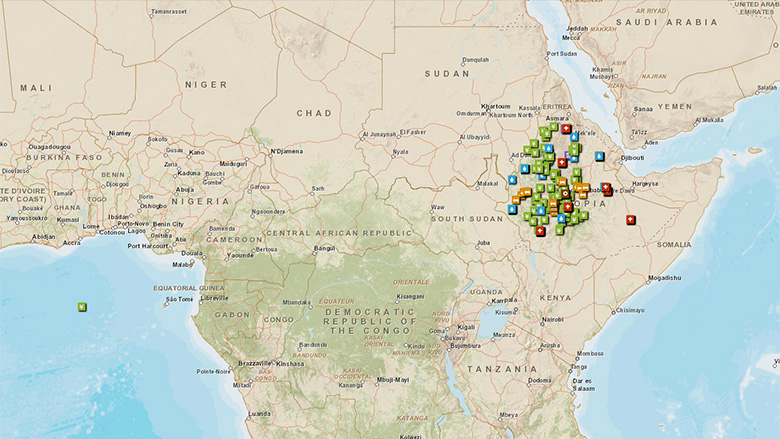Challenge
As of 2007, an estimated 1.32 million Ethiopians were infected with HIV, with over 130,000 new infections each year. An epidemic of HIV transmission was taking place in most at-risk populations, particularly sex workers and their clients. As a result, life expectancy was falling and expected to drop from 59 to 50 years by 2010. In 2005, 80% of the 60 million Ethiopians lived rurally, and 39% lived below the poverty line. AIDS had become the leading killer of 15-49 year olds, causing 43% of all adult deaths, severely damaging economic growth and slowing poverty alleviation. Poverty, illiteracy, widespread transactional sex, gender disparity, population movement, and traditional practices such as female genital mutilation all contributed to the epidemic.
Solution
The first Ethiopian Multisectoral HIV/AIDS Project (EMSAP1), closed in 2006, supported general awareness of HIV and AIDS, as well as increased condom use, but not at a sufficiently high level. This project, EMSAP2, set out to scale up where EMSAP1 left off, notably to increase the percentage of:
- young people who could correctly identify ways of preventing sexual transmission of HIV and who reported the use of a condom with their last sexual intercourse with a non-regular partner
- sex workers who report using a condom with their most recent client
- people over the age of 15 in voluntary HIV counseling and testing
- districts supporting groups for people living with HIV/AIDS and programs for orphans
The project was designed to:
- Strengthen public, private, and civil society organizations to improve coordination and strengthen the monitoring and evaluation system in line with the national capacity building program.
- Promote Peer education, counseling and testing, condom distribution, and mechanisms for reduction of harmful traditional practices were supported to prevent HIV spread.
- Support community and district-based initiatives to deliver proven HIV prevention and mitigation activities to at-risk groups.
Results
- 9.8 million people over the age of 15 undergoing voluntary HIV counseling and testing each year, as of 2010
- 79% of females and 84% of males aged 15-24 both correctly identify ways of preventing HIV transmission and reject major misconceptions about HIV transmission, as of 2011
- 81% of females and males aged 15-24 reported the use of a condom during their last sexual intercourse with a non-regular partner, as of 2011
- 98% of sex workers reported using a condom with their most recent client
- 98% of districts are supporting effective groups for people living with HIV/AIDS and implementing community programs to support orphans
- The project also established an HIV/AIDS information and monitoring and evaluation system that supports improved policy and program decision making by the time
Bank Group Contribution
The International Development Association (IDA) was the only financier of the project, contributing a total of US$25,997,472 to the project.
Partners
Federal and regional HIV/AIDS prevention and control offices were established to coordinate the national response with oversight provided by a board chaired by the Minister of Health.
Other Partners:
- The Global Fund for AIDS
- President’s Emergency Plan for AIDS Relief (PEPFAR)
Moving Forward
The project closed in March 2012. The government and civil society have limited resources and capacity to sustain the necessary levels of inputs and services, and there is concern that the Global Fund and PEPFAR will not sustain current levels of financing. Thus, other sources of funding must be identified, including government appropriations and community contributions.
